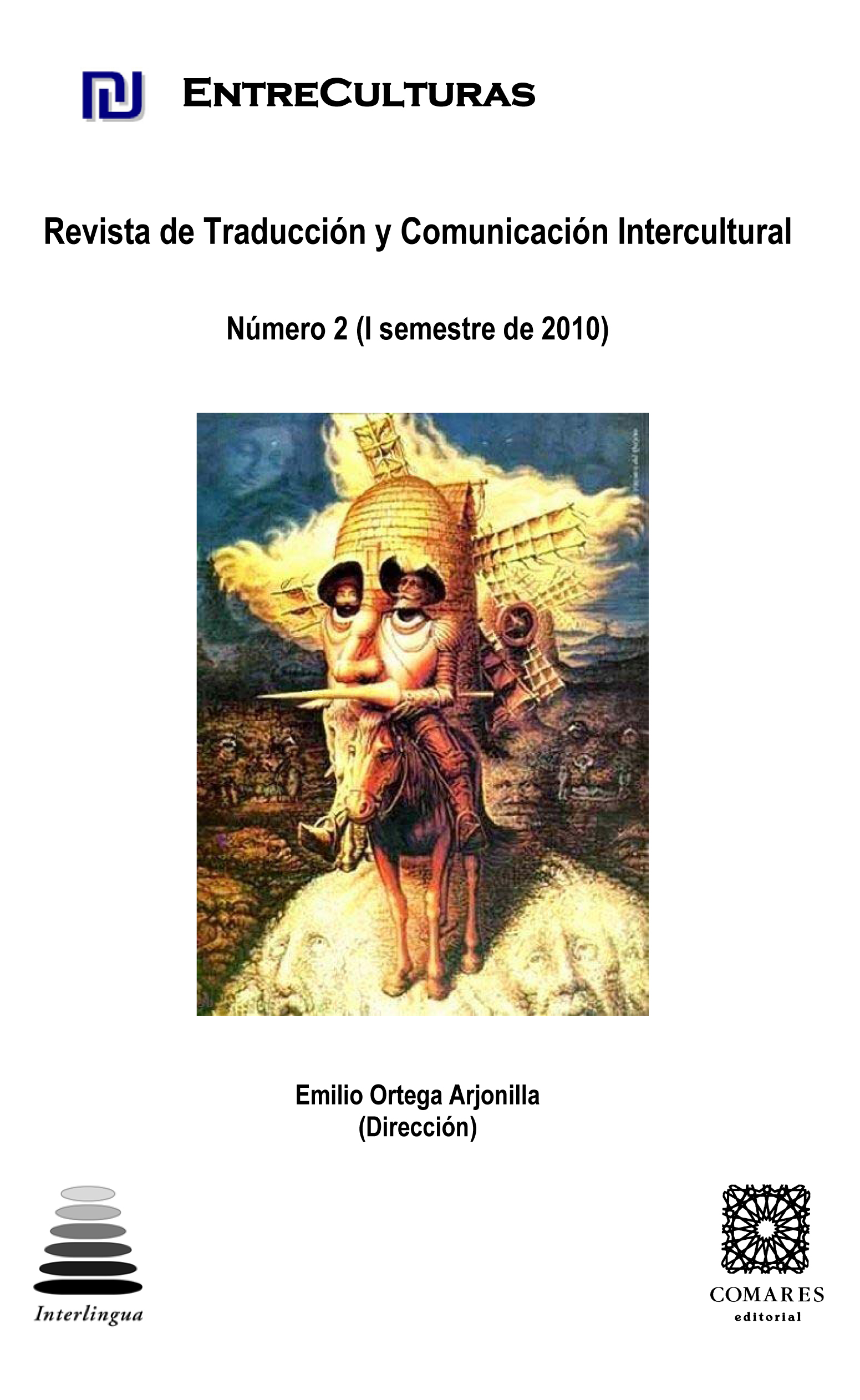DE CÓMO LAURA GARCÍA PERDIÓ SU ACENTO
DOI:
https://doi.org/10.24310/Entreculturasertci.vi2.11758Keywords:
How the García Girls Lost Their Accents, language, identity, translation, hybridizationAbstract
The aim of this paper is to analyze how Julia Alvarez constructs the character of the mother, Laura García de la Torre, through the latter’s use of language in How the García Girls Lost Their Accents. Given that language is one of the main signs of identity, the way in which Laura expresses herself reveals her attitude towards American society, as well as her position within that culture. We would expect, therefore, to find these features in the translation. However, as we will see, neither of the Spanish versions deploys a systematic stance on this problem.
Downloads
Metrics
References
ÁLVAREZ, Julia (1991): How the García Girls Lost Their Acents. Nueva York, Plume.
? (1994): De cómo las chicas García perdieron su acento. Barcelona, Ediciones B. Traducción de Jordi Gubern.
? (2007): De cómo las muchachas García perdieron el acento. Madrid, Punto de lectura. Traducción de Mercedes Guhl.
CRONIN, Michael (2006): Translation and Identity. Londres/Nueva York, Routledge.
DORFMAN, Ariel (1998): Heading South, Looking North: A Bilingual Journey. Londres, Sceptre.
ESQUIVEL, Laura (2007 [2005]): Malinche. Madrid, Punto de lectura.
HANNA, Sameh F. (2005): “Othello in Egypt. Translation and the (Un)making of National Identity” en Juliane House, Mª Rosario Martín Ruano y Nicole Baumgarten (eds.): Translation and the Construction of Identity. Seul, IATIS, 109-128.
JOHNSON, Kelli Lyon (2005): Julia Alvarez: writing a new place on the map. Albuquerque, University of New Mexico Press.
MARTÍN RUANO, Mª Rosario (2003): “Una (re)visión de la mirada sobre lo otro: el discurso crítico de los estudios de traducción y sus límites” en Mª Carmen África Vidal Claramonte, Juan Crespo y Mª Rosario Martín Ruano (eds.): Panorama actual de la investigación en traducción e interpretación. Granada, Atrio, 241-255.
VIDAL CLARAMONTE, Mª Carmen África (2007): Traducir entre culturas: diferencias, poderes, identidades. Berna, Peter Lang.
Downloads
Published
How to Cite
Issue
Section
License
All contents published in Entre culturas. Revista de traducción y comunicación intercultural are protected under the Creative Commons Attribution-NonCommercial-ShareAlike 4.0 International (CC BY-NC-SA 4.0) license. All about this license is available in the following link: <http://creativecommons.org/licenses/by-nc-sa/4.0>
Users can copy, use, redistribute, share and exhibit publicly as long as:
- The original source and authorship of the material are cited (Journal, Publisher and URL of the work).
- It is not used for comercial purposes.
- The existence of the license and its especifications are mentioned.
There are two sets of authors’ rights: moral and property rights. Moral rights are perpetual prerogatives, unrenounceable, not-transferable, unalienable, imprescriptible and inembargable. According to authors’ rights legislation, Entreculturas. Revista de traducción y comunicación intercultural recognizes and respects authors moral rights, as well as the ownership of property rights, which will be transferred to University of Malaga in open access. The property rights are referred to the benefits that are gained by the use or the dissemination of works. Entreculturas. Revista de traducción y comunicación intercultural is published in an open access form and it is exclusively licenced by any means for doing or authorising distribution, dissemination, reproduction, , adaptation, translation or arrangement of works.
Authors are responsable for obtaining the necessary permission to use copyrighted images.





7.png)
